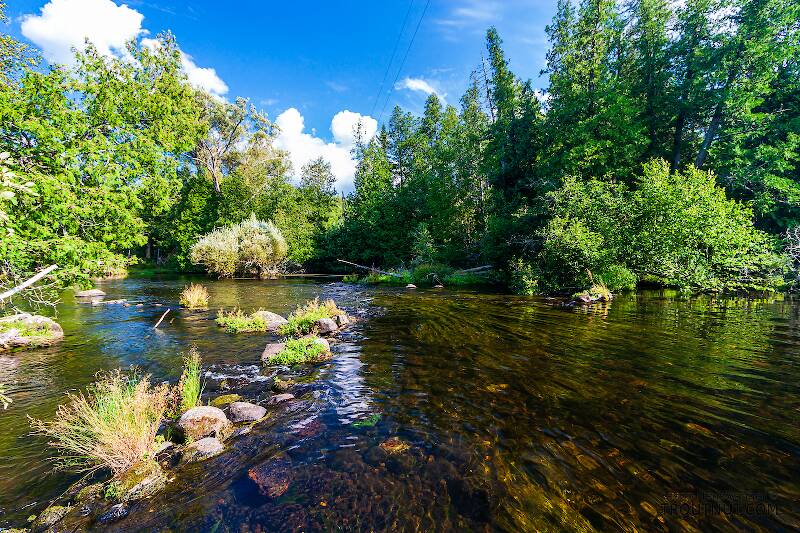
Blue-winged Olives
Baetis
Tiny Baetis mayflies are perhaps the most commonly encountered and imitated by anglers on all American trout streams due to their great abundance, widespread distribution, and trout-friendly emergence habits.


Mayfly Species Baetis pluto (BWOs)
Species Range
Physical description
Most physical descriptions on Troutnut are direct or slightly edited quotes from the original scientific sources describing or updating the species, although there may be errors in copying them to this website. Such descriptions aren't always definitive, because species often turn out to be more variable than the original describers observed. In some cases, only a single specimen was described! However, they are useful starting points.
Male Spinner
Wing length: 4.5 mm
Abdominal tergites 2-8 of male imago largely maroon brown, with pale hyaline areas on the lateral and anterior margins; genitalia of the Baetis intercalaris type, having no tubercle on the inner apical margin of the first forceps joint.
Turbinate eyes moderate; deep black-brown. Head and thorax shiny blackish. Lateral margin of mesonotum, anterior to the wing roots, brown; a light brown spot on the antero-lateral corner of mesonotum; pleural sutures shaded with brown. Legs dull ochreous, tibiae and tarsi paler than the femora. Wings hyaline, venation pale. Heavy granulations present between the cross veins of the stigmatic area of the fore wing; cross veins anastomosed. First pair of intercalaries obsolescent, second pair rather short, third pair well developed, long. Hind wing almost three times as long as its width; third vein well developed, running beyond the middle of the hind margin. Between veins 2 and 3 is one long intercalary, and a shorter somewhat obsolescent one. Traces of two short intercalaries between veins 1 and 2.
Abdominal tergites 2-6 semi-translucent, deeply tinged with maroon brown on most of each tergite; along the lateral and anterior margins, however, are pale hyaline areas. Tergites 7-10 opaque maroon brown. Sternites 2-6 pale hyaline; 7-10 opaque, whitish with brown tinges. Tracheae of the spiracular area prominently marked with black. Tails white. Forceps brown-tinged. There is no tubercle on the inner apical margin of the first forceps joint.
The maroon-brown of the abdomen and the blacker thorax, as well as the absence of the forceps tubercle, distinguishes this species from Baetis rusticans. The abdominal markings are darker than in B. levitans (now a synonym of Baetis flavistriga).
Start a Discussion of Baetis pluto
References
- Needham, James G., Jay R. Traver, and Yin-Chi Hsu. 1935. The Biology of Mayflies. Comstock Publishing Company, Inc.
Mayfly Species Baetis pluto (BWOs)
Species Range
Common Names
Resources
- NatureServe
- Integrated Taxonomic Information System
- Global Biodiversity Information Facility
- Described by McDunnough (1925)

